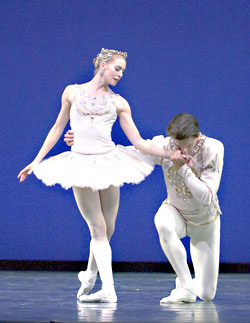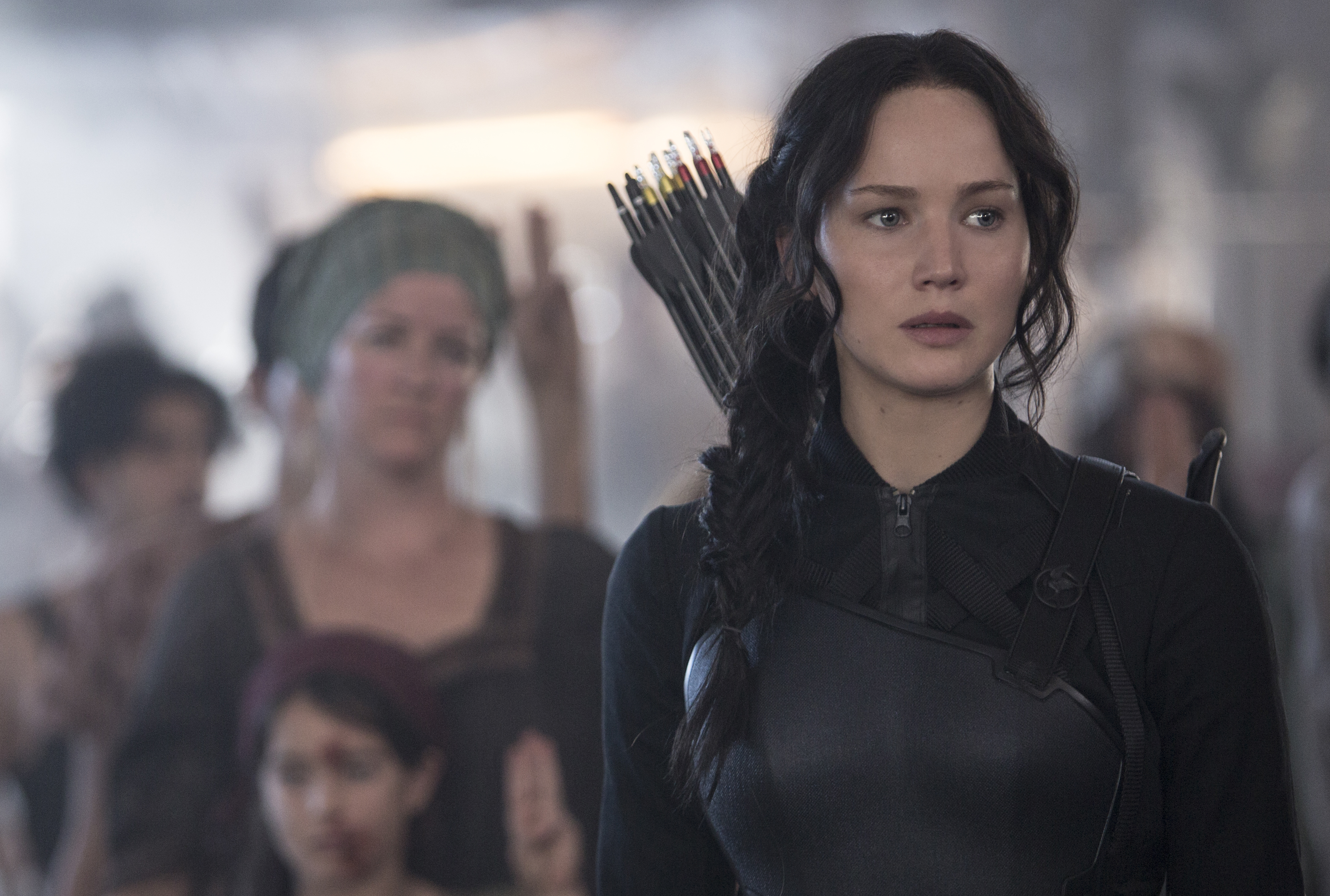George Balanchine made Jewels in an uncharacteristically retrospective mood. The choreographer, who was always looking to the next challenge, the next new dancer’s body to inspire him, paused for a look back at places where he, and 20th-century classical dance, had been. The first of its three movements, “Emeralds,” originally starring the ethereal Violette Verdy, is “romantic,” but Balanchine’s use of Gabriel Fauré’s music ensures that the romanticism is more the moony melancholia of Maeterlinck and a long way from the simple emotions of pure French romantic dance exemplified in Giselle. “Rubies,” created for two of New York City Ballet’s most vivid character dancers, Patricia McBride and Edward Villella, is set to one of Stravinsky’s most tossed-off scores, and its steps almost parody as they celebrate Balanchine’s frequent work for Broadway musicals and movies. “Diamonds” is by far the most straightforward of the three movements, but its evocation of sumptuous czarist dance entertainments, excepting the sublime central pas de deux (originally performed by Suzanne Farrell), unashamedly plays against the frequent vulgarities and excesses of one of Tchaikovsky’s distinctly lesser symphonic efforts.
Knowledge of the distinguished ghosts whose slippers you’re wearing, of the library-of-dance-styles background of the work, must be a bit daunting to dancers new to the piece and their roles. Pacific Northwest Ballet’s opening-night casts danced almost flawlessly, so maybe I imagined a faint sense of constraint in their movement, like people bearing delicate and irreplaceable crystal objets d’art. This seems particularly evident in the cool subaqueous “Emeralds,” where the couples are undemonstrative to a degree rare even in classical ballet. Louise Nadeau and Christophe Maraval look glorious together, but nothing much was happening, certainly not the encoded tissue of touch and glance woven by Noelani Pantastico and Jeffrey Stanton in their duets. Special credit to hornist Rodger Burnett for his courage and authority in the cruelly exposed passages Fauré, not a forgiving orchestrator, challenges his instrument with.
“Rubies” is the crowd pleaser of Jewels, particu-larly when preceded by the moody restraint of “Emeralds.” It tempts the dancers to frisk and frolic a bit too much, and Kaori Nakamura and Jonathan Porretta gave in a bit to temptation, thereby softening the really savage edge the movement in this piece can deliver. Ariana Lallone, I felt, erred a bit the other way in her turn as the Tall Girl, maintaining dancerly decorum even when being tied in knots by four male partners. This passage doesn’t need to be played as choreographic S&M, as it is these days at NYCB, but the woman undergoing the manipulation should surely seem aware that it’s going on, even if she chooses to adopt no specific attitude toward it. These things said, I found “Rubies” a delight to watch from beginning to end. As for Dianne Chilgren’s rendition of the piano part, I don’t care what the program says, I know no one pianist could have made such a dazzling noise.
“Diamonds”calls for a cast of more than 30 dancers, but belongs utterly to its ballerina. The role was taken Thursday by Patricia Barker (she will repeat it at the matinee performance on Saturday, June 10). Her recently announced retirement from the company has saddened many, even those who agree that it was time for her to step down from the pedestal from which she’s ruled PNB for an astonishing 20 years. Barker herself, to judge from her performance of the giant “Diamonds” pas de deux (with Stanko Milov, a perfectly self-effacing partner), feels liberated. I don’t think I’ve ever seen her perform with such freedom and ease. The word “radiant” is overused to describe dancers in excelsis. Barker shone with her own pearly light.
I realize I’ve said nothing about the corps and supporting dancers. It’s not because their work was inferior or uninteresting—on the contrary. But this ballet is focused on the gems, not the setting. The PNB corps played that setting to perfection. Bravi!








